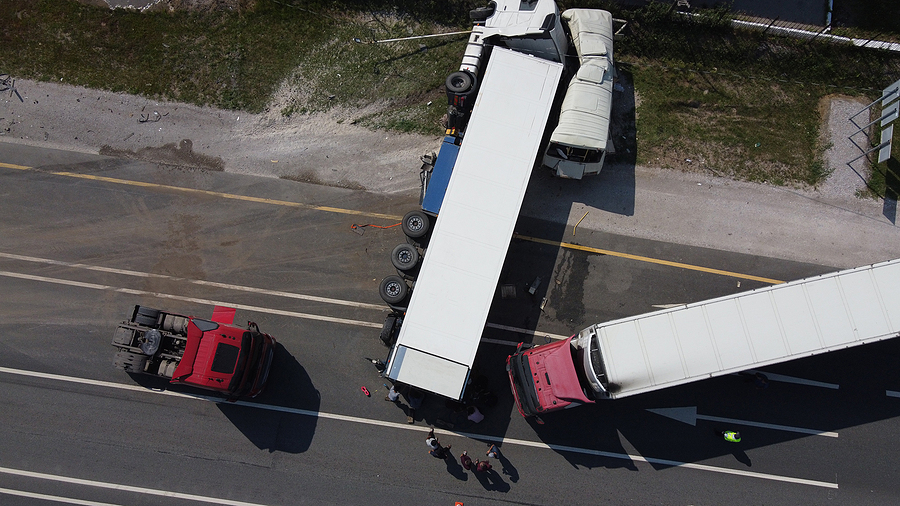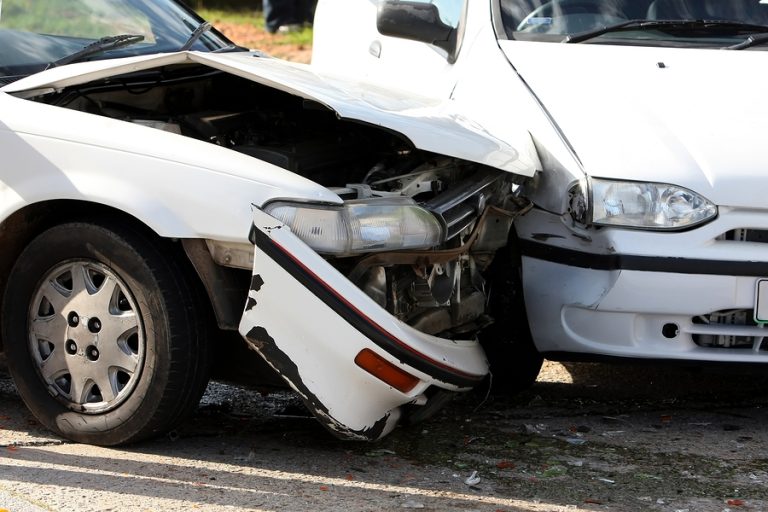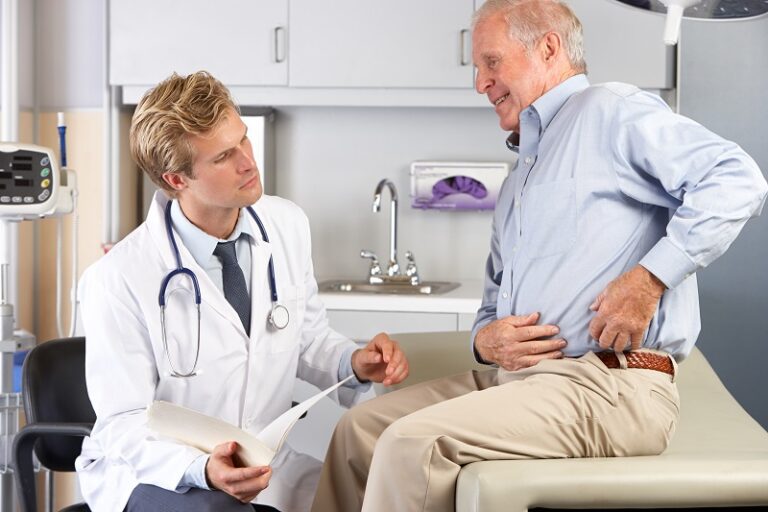
According to a report from the transportation research group TRIP, about $2.8 trillion in products ship into and out of San Diego each year. These products include imports arriving at the city’s ports and products both going to and coming from the rest of the country via truck.
While California’s economy depends on the movement of these products, the presence of truck traffic on the city’s roadways results in an increased risk to the occupants of other motor vehicle types. This risk could include injury or death resulting from a truck-involved accident. One of the most deadly types of truck-involved accidents that a driver can experience is a t-bone collision.
What Is a T-Bone Collision?
A t-bone accident, also known as a broadside collision or a side-angle crash, occurs when the front of one vehicle collides with the side of another. This type of accident most often occurs in an intersection, when the driver of one vehicle has failed to yield the right-of-way to another vehicle as legally required.
T-bone crashes can also take place where a private drive or parking lot connects with the roadway, or in parking lots with a lack of traffic control devices and a high number of vehicles pulling into or out of parking spaces. This type of accident accounts for nearly one-quarter of all motor vehicle deaths in the U.S.
How Do T-Bone Accidents Generally Occur in San Diego?
According to the TRIP report, 64 percent of urban San Diego’s roadways are mediocre to poor, with hazards such as narrow or poorly marked lanes, inadequate lighting, obstructed views, and improperly designed intersections. Around one-third of all traffic-related accidents in the region are caused—at least in part—by defective roadway conditions.
Other common causes of truck t-bone accidents in San Diego include:
- Distracted driving that can prevent a driver from yielding the right-of-way at an intersection.
- Alcohol impairment, which impairs the skills a driver needs to safely operate their motor vehicle, including the ability to control one’s speed and brake effectively.
- Speeding, which both reduces the time a driver needs to perceive a hazard on the road and respond by braking, and also increases the distance that the vehicle needs to stop. Speeding makes it difficult for a driver to judge a safe gap in traffic, which can also lead to a t-bone collision.
- Road rage, which is defined as the attempt to punish another driver for a perceived slight or driving error. Common signs of road rage include red-light running or deliberately attempting to bump or ram another vehicle from the road.
The Dangers Of Being in a T-Bone Accident With a Truck
The doors to motor vehicles often do not provide airbags or even an engine compartment or trunk, which can absorb some energy in a crash.
Instead, the occupant on the struck side of the vehicle absorbs the force of the crash with their body. This often creates more severe injuries, particularly when a larger vehicle hits the side of a smaller one.
The massive size of the truck—weighing 20 to 30 times more than the average passenger car—also spells doom for occupants of the vehicle it broadsides. Commercial trucks have a substantial amount of space under the truck that a smaller car can slip into, producing a particularly deadly type of accident known as an underride.
The Types of Injuries That Occur In T-Bone Accidents
In addition to fatalities, broadside collisions can produce the most serious and long-lasting of all types of injuries, including those that impact the organs that make up the body’s central nervous system: the brain and the spinal cord.
- Traumatic brain injuries generally result from a sudden blow to the head or body, such as one could experience if sitting on the side of a vehicle broadsided by a truck and striking their head on the encroaching vehicle or obstacles inside the victim’s vehicle. One of the main problems with traumatic brain injuries is that the brain cannot heal effectively from injury, which means that much of the damage caused by the injury is permanent. Traumatic brain injuries often result in loss of memory, the inability to move the body in a balanced or coordinated manner, the inability to communicate verbally or understand verbal communication, and the inability to control one’s behaviors or impulses.
- Spinal cord injuries damage the bundle of nerves that extends from the base of the skull to the waist and communicates messages from the brain to the rest of the body. Damage to the spinal cord generally results in a loss of sensation and function below the injury. This condition is known as paralysis. Paralysis affecting all of the body from the neck down, such as one experiences with damage to the cervical (neck) region is known as quadriplegia or tetraplegia, while injuries occurring lower in the spine will produce loss of sensation and function to the lower extremities, which is known as paraplegia.
- Bone fractures, which the force of the truck often causes when colliding with the side of the vehicle and damaging body parts that absorbed the impact.
- Internal organ damage that can result from the violence of a broadside that involves two very differently sized vehicles or one fast-traveling vehicle.
Obtaining Compensation For Your San Diego Truck T-Bone Injuries
If you were injured in a t-bone truck accident in San Diego, the state’s laws allow you to seek compensation for the expenses and quality-of-life changes you incurred.
You generally have two years to take action unless the claim is against a city, county, or state governmental agency or employee. In governmental claims, the claimant has six months to file a claim seeking compensation.
If you have lost a loved one in a San Diego truck t-bone accident, you can seek compensation through a wrongful death lawsuit. This claim is only available to family members of the deceased, including their spouse or domestic partner, children, parents, or other family members who can prove that they depended on the deceased for services and support. Like personal injury claims, wrongful death lawsuits in California carry a two-year statute of limitations.
The Type Of Compensation You Can Receive
California allows personal injury and wrongful death claimants to use the court system to recover both economic and non-economic damages. Economic damages refer to compensation for the expenses that you incurred as a result of the accident, while non-economic damages compensate for the psychological impacts of your injury.
Some commonly claimed expenses and impacts in San Diego truck t-bone accidents include:
- Medical expenses, such as ambulance transport, surgery, hospitalization, and prescription medication.
- Lost wages if you are too injured to work.
- Loss of future earning capacity if your injury is catastrophic, creating a permanent disability and preventing you from making what you did before the accident.
- The cost of repairing or replacing the vehicle you were driving when the accident occurred.
- Physical and emotional pain and suffering, including loss of consortium—compensation collected on behalf of the injured person’s spouse for the loss of companionship and physical intimacy after a spouse incurred a serious injury—as well as loss of the enjoyment of life.
Commonly claimed expenses and impacts in San Diego wrongful death cases involving truck t-bone accidents include:
- Loss of financial support and services that the deceased contributed to the family.
- Funeral and burial expenses paid by a surviving family member.
- Loss of the deceased’s love, companionship, comfort, care, assistance, protection, affection, society, and moral support.
- Loss of the spouse or domestic partner’s enjoyment of intimacy with the deceased.
- Loss of parental guidance provided by the deceased to their children.
Proving Liability In a Truck Accident
Most truck accidents—including those involving t-bones—occur as the result of negligence. Negligence is the failure to take precautions in a given set of circumstances to protect the health and property of others. This is called a duty of care.
Truck drivers have an increased duty of care compared with other types of roadway users, simply due to the size of the vehicle they drive.
Some of the components of this increased duty of care include:
- Higher amounts of liability insurance required for truck drivers to properly compensate the victims of accidents they cause.
- Hours of service requirements, which mandate all truck drivers to take regular off-duty breaks and days off from work.
- Reduced alcohol impairment limits.
- Regular random drug, alcohol, and physical health screenings.
While negligent truck drivers cause many accidents, other potential sources of liability may cause truck accidents.
These sources include:
- The trucking company that employs the driver. Employers are vicariously liable for the actions of their employees that occur during the normal scope of employment. Additionally, trucking companies must ensure that their drivers are properly licensed and insured and regularly inspect and service their vehicles.
- Other drivers, including other vehicle drivers, whose negligent actions caused a truck t-bone accident.
- The manufacturer of parts used on the truck or other vehicles if defective parts caused the accident.
- The entity responsible for providing maintenance services on the truck if it improperly performed those services.
- The shipper, who must ensure that the driver and the trucking company have the required insurance, are in good standing with federal regulating authorities, and that the loading crew properly loaded cargo in the truck.
To prove liability, you must be able to show these elements in your claim:
- The at-fault party owed you a duty of care.
- There was a breach in the duty of care.
- The breach caused your accident and the expenses and impacts related to your injury.
San Diego T-Bone Truck Accident? An Attorney Can Help
T-bone truck accidents are serious events that can permanently alter the lives of other roadway users and their families. An experienced truck accident attorney understands the types of evidence and testimony you need to prove your claim and will fight relentlessly alongside you as you seek compensation.
Let a San Diego truck accident lawyer help you make sense of the legal process of recovering damages.







